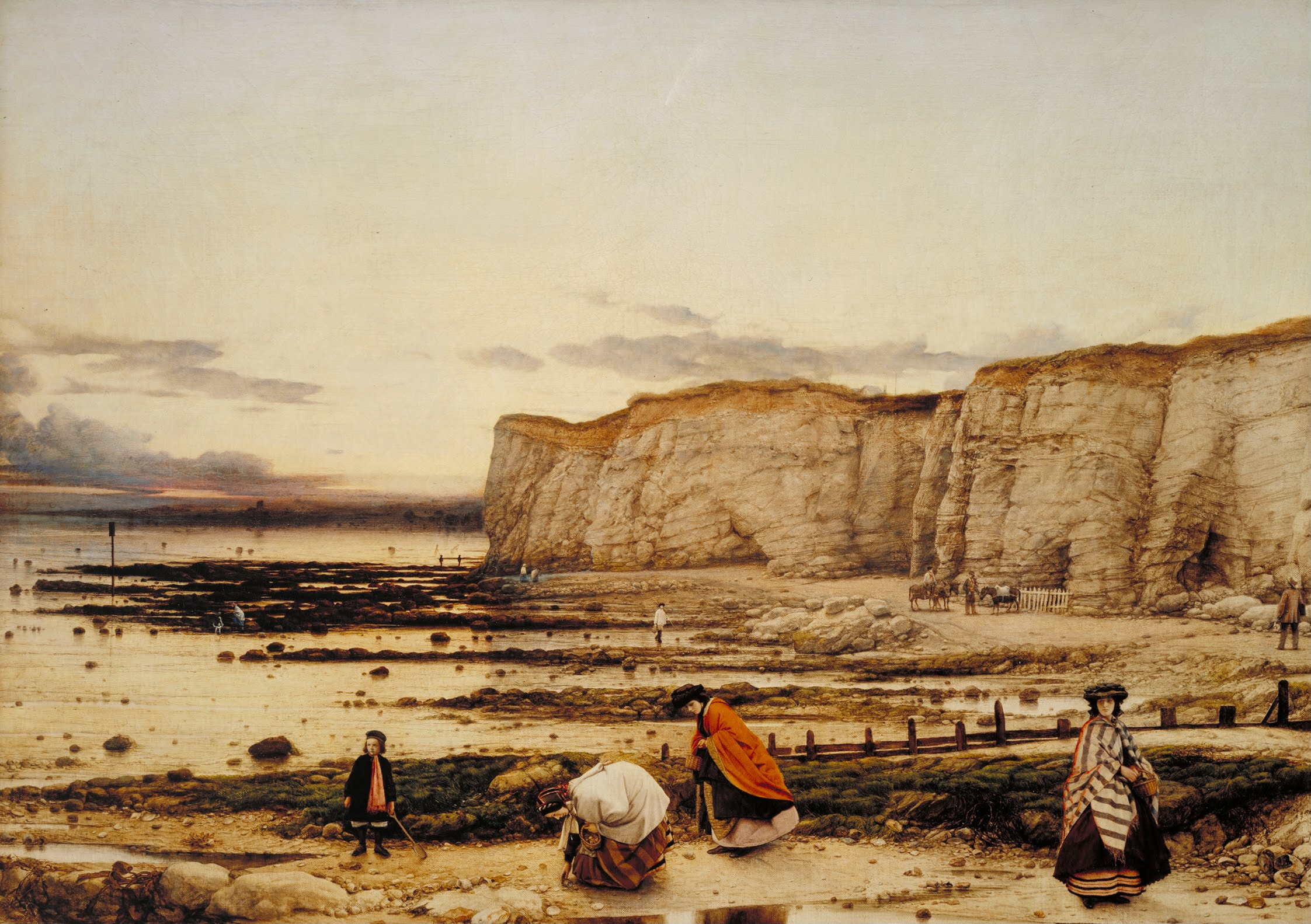Science in the Public Conscious: William Dyce's Recollection

If one had to choose a single painting which best represents the effect the sciences had on the popular psyche in the latter half of the 19th century, it wouldn’t be unreasonable to pick William Dyce’s Pegwell Bay, Kent – a Recollection of October 5th 1858. The painting depicts a family exploring the rock pools left by the receding tide, a backdrop of chalk cliffs beneath a vast sky, tinted slightly by the ochres of a setting sun. This otherwise ordinary scene gains a much greater significance when considered in the context of the scientific advancements of the time. Less than a year earlier Charles Darwin had published his foundational work On the Origin of Species, while at the same time geologists such as Charles Lyell were putting forward groundbreaking theories on geological formation. At the heart of both of these emerging fields was the suggestion that the Earth was almost incomprehensibly old. How must it have felt to be a human, previously stood amongst the shallow ripples of ordinary life, to be cast adrift on the vast tides of geological time? How could one hope to reconcile the implications of evolution with their religious beliefs? And what of the promises of eternity on which they had staked their life? An eternity which had at once adopted an earthly element. With this in mind it is hard not to imagine one sees fossils emerging from the carefully rendered strata of those white chalk cliffs, artifacts of a lost time, or to perceive a loss in the receding waves. The loss of what it is hard to say. An innocence perhaps. A comforting simplicity of thought. A lie. But such is the nature of change that even an exciting unknown is often rejected in preference for a familiar ignorance.
A minor feature in the painting is the father figure who stands with his back to his family, looking up to the sky. A faint white streak is Donati’s comet, which was visible in the southern sky at the date of the painting. Here is a reminder not only of the vast aeons of time, but of the perhaps yet more incomprehensible scale of our universe, which by the mid 19th century was beginning to be better understood. The viewers eye is ultimately drawn to this lone figure, who stands conscious for the first time of his position in the present moment as a mere flicker in the flame of antiquity, gazing up (down) into the unfathomable depths of the cosmos. Stood looking out over the waves, an educated member of Victorian society, one can imagine there runs through his mind the words of Lord Tennyson, writing almost a decade earlier:
If e'er when faith had fallen asleep, I hear a voice 'believe no more' And heard an ever-breaking shore That tumbled in the Godless deep, (In Memoriam A.H.H., 1850)
Whether this figure was ever able, as Tennyson was, to reconcile his faith with the new science of his age we cannot be sure. What is certain is that Dyce’s painting is a masterpiece of social commentary, finely perceptive to the hairline fractures which were beginning to form in the foundations of genteel society, a quiet yet disquieting image of a new and inevitable moment of being.